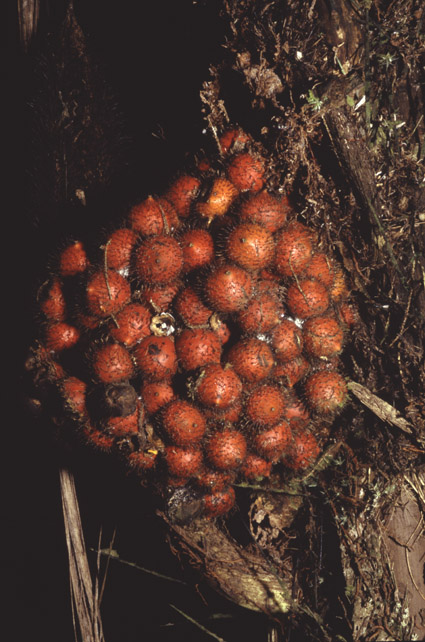- Acanthophoenix
- Acrocomia
- Actinokentia
- Actinorhytis
- Adonidia
- Aiphanes
- Allagoptera
- Ammandra
- Aphandra
- Archontophoenix
- Areca
- Arenga
- Asterogyne
- Astrocaryum
- Attalea
- Balaka
- Barcella
- Basselinia
- Beccariophoenix
- Bismarckia
- Borassodendron
- Borassus
- Brassiophoenix
- Burretiokentia
- Butia
- Calamus
- Calyptrocalyx
- Calyptrogyne
- Calyptronoma
- Carpentaria
- Carpoxylon
- Caryota
- Ceratolobus
- Ceroxylon
- Chamaedorea
- Chamaerops
- Chambeyronia
- Chelyocarpus
- Chuniophoenix
- Clinosperma
- Coccothrinax
- Cocos
- Corypha
- Cryosophila
- Cyphokentia
- Cyphophoenix
- Cyphosperma
- Daemonorops
- Deckenia
- Desmoncus
- Dictyocaryum
- Drymophloeus
- Dypsis
- Elaeis
- Eleiodoxa
- Eremospatha
- Eugeissona
- Euterpe
- Gaussia
- Geonoma
- Guihaia
- Hedyscepe
- Hemithrinax
- Howea
- Hyophorbe
- Hyospathe
- Hyphaene
- Iriartea
- Iriartella
- Itaya
- Jailoloa
- Johannesteijsmannia
- Juania
- Jubaea
- Jubaeopsis
- Kentiopsis
- Kerriodoxa
- Korthalsia
- Laccospadix
- Laccosperma
- Lanonia
- Latania
- Lemurophoenix
- Leopoldinia
- Lepidocaryum
- Lepidorrhachis
- Leucothrinax
- Licuala
- Linospadix
- Livistona
- Lodoicea
- Lytocaryum
- Manicaria
- Manjekia
- Marojejya
- Masoala
- Mauritia
- Mauritiella
- Maxburretia
- Medemia
- Metroxylon
- Myrialepis
- Nannorrhops
- Nenga
- Neonicholsonia
- Neoveitchia
- Nephrosperma
- Normanbya
- Nypa
- Oenocarpus
- Oncocalamus
- Oncosperma
- Orania
- Oraniopsis
- Parajubaea
- Pelagodoxa
- Phoenicophorium
- Phoenix
- Pholidocarpus
- Pholidostachys
- Physokentia
- Phytelephas
- Pigafetta
- Pinanga
- Plectocomia
- Plectocomiopsis
- Podococcus
- Pogonotium
- Ponapea
- Prestoea
- Pseudophoenix
- Ptychococcus
- Ptychosperma
- Raphia
- Ravenea
- Reinhardtia
- Retispatha
- Rhapidophyllum
- Rhapis
- Rhopalostylis
- Roscheria
- Roystonea
- Sabal
- Sabinaria
- Salacca
- Saribus
- Satakentia
- Satranala
- Schippia
- Sclerosperma
- Socratea
- Solfia
- Sommieria
- Syagrus
- Synechanthus
- Tahina
- Tectiphiala
- Thrinax
- Trachycarpus
- Trithrinax
- Veitchia
- Verschaffeltia
- Voanioala
- Wallaceodoxa
- Wallichia
- Welfia
- Wendlandiella
- Wettinia
- Wodyetia
- Zombia
- x Jubautia splendens
- ?? Acoelorrhaphe
- ?? Bentinckia
- ?? Brahea
- ?? Clinostigma
- ?? Colpothrinax
- ?? Copernicia
- ?? Cyrtostachys
- ?? Dictyosperma
- ?? Dransfieldia
- ?? Heterospathe
- ?? Hydriastele
- ?? Iguanura
- ?? Incertae sedis & excluded names
- ?? Loxococcus
- ?? Micronoma
- ?? Paripon
- ?? Pritchardia
- ?? Rhopaloblaste
- ?? Serenoa
- ?? Washingtonia

Distribution
Peru (Amazonas, Loreto) and Brazil (Acre, Amazonas). (Henderson, A.J., Bactris (Palmae) in Flora Neotropica Monographs 79. 2000)A
Habitat
- Terra firme or low-lying, wet places near small streams, in lowland rain forest at 150-300 m elevation. (Henderson, A.J., Bactris (Palmae) in Flora Neotropica Monographs 79. 2000)A
Discussion
- Bactris halmoorei is diagnosed by its tall stems, broadly lanceolate pinnae, filamentous, densely spinulose rachillae, and pistillate flowers with the calyx shorter than the spinulose corolla. It is similar to, and has been confused with, B. pliniana; some of the specimens cited above were included by Henderson (1995) under the latter species. Pardini 24 has unusual flowers; some of the staminate flowers are 4-merous, and the pistillate flowers have a second, incomplete "corolla." This species is named for Harold Moore, an outstanding student of palms. (Henderson, A.J., Bactris (Palmae) in Flora Neotropica Monographs 79. 2000)A
Common Name
- Brazil: marajá. Peru: nejilla, uhahík, ujagkit. (Henderson, A.J., Bactris (Palmae) in Flora Neotropica Monographs 79. 2000)A
Description
- Stems cespitose, with to 8 stems per clump, 2-8 m tall, 4-5 cm diam., spiny on internodes.
Leaves 4-9; leaf spines mostly solitary and scattered, black, somewhat flattened, to 8 cm long, denser on sheath and proximal part of petiole, scattered on abaxial surface of rachis; sheath 30-60 cm long; ocrea not seen; petiole 65-92 cm long; rachis 1.6-2.5 m long; pinnae 27-42 per side, irregularly arranged in clusters, spreading in different planes, broadly lanceolate, with visible cross-veins, occasionally spiny on the margins; middle pinnae 45-56 x 4-6.5 cm.
Inflorescences interfoliar; peduncle 15-23 cm long, recurved, flattened, spiny; prophyll 20-25 cm long; peduncular bract 40-50 cm long, persistent, densely covered with blackish or brownish spines to 1 cm long; rachis to 7 cm long, densely spiny; rachillae to 80, filamentous, 14-16 cm long, densely to moderately covered proximally with spinules; triads more or less regularly arranged (but often with solitary staminate flowers interspersed) on proximal ca. half or more of rachillae, and there tending to be absent from adaxial side of rachillae (paired or solitary staminate flowers only on distal ca. half of rachillae); staminate flowers 1.5-2.5 mm long; sepal lobes 0.5-1 mm long; petals 1.5-2 mm long; stamens 3; pistillode small or absent; pistillate flowers to 6 mm long; calyx cupular, 1.5-2 mm long, glabrous; corolla tubular, 4-5 mm long, spinulose; staminodes absent; fruits ca. 1.5 cm diam., broadly obovoid, shortly rostrate, orange or red, with soft spinules; mesocarp starchy; endocarp obovoid, the sterile pores slightly displaced longitudinally; endocarp fibers few or absent; fruiting perianth with lobed calyx much shorter than the lobed corolla, without staminodial ring. (Henderson, A.J., Bactris (Palmae) in Flora Neotropica Monographs 79. 2000)A
Use Record
- Bactris halmoorei A.J.Hend.: Bactris halmoorei A.J.Hend. Español: Nejilla Usos: Construcción — Los troncos son ocasionalmente utilizados en la construcción de viviendas, para vigas de techo y pisos. Herramientas y utensilios — Ocasionalmente los frutos son utilizados como cebo para la pesca. Alimenticio — Los frutos maduros son comestibles. Comunidad: 2, 4, 6, 7, 12, 14, 16, 19, 21, 24, 25. Voucher: sin muestra colectada. (Balslev, H., C. Grandez, et al. 2008: Useful palms (Arecaceae) near Iquitos, Peruvian Amazon)
Use Category Use Sub Category Plant Part Human Group Ethnic Group Country Animal Food Fish bait Fruits Not identified N/A Peru Human Food Food Fruits Not identified N/A Peru Construction Houses Stem Not identified N/A Peru
- Log in to post comments

